Features of Georgian Architecture – Everything you need to know
Features of Georgian Architecture can be seen throughout our towns and cities today. However, most people do not realise the huge impact the Georgians had on our architectural landscape.
This article is here to turn you from a beginner to an expert in Georgian Architecture. You will soon be able to discern a Georgian townhouse from its Victorian counterpart and identify the all of key architectural elements.
When was the Georgian period?
The Georgian period refers to the reigns of four King Georges in England, from 1714 to 1830.
During this time, England experienced significant growth and prosperity, leading to the construction of many grand and elegant buildings, many of which are still available to enjoy to this day.
The Georgian period saw the construction of many public buildings, residences, and mansions, and the style is still prevalent in cities and towns across England and the United States.
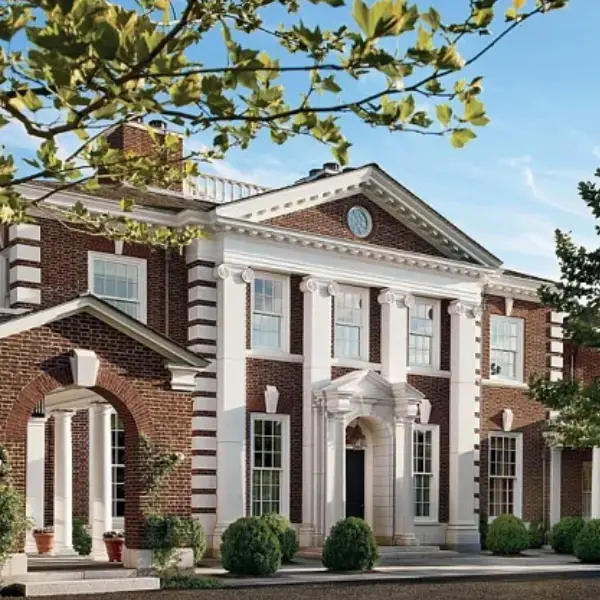
Georgian architecture remains an iconic representation of the elegance and sophistication of the Georgian era and continues to influence architectural design even today.
Towards the bottom of this article, we highlight a number of amazing Georgian buildings, some of which you will already recognise but may not have released they were part of the Georgian construction boom.
So what is Georgian architecture?
Georgian architecture is a style that emerged during the Georgian period and is characterised by its classical elements, symmetry, and proportion.
Classic elements refer to a style of architecture that is heavily influenced by classical Greek and Roman architecture. These influences combined with the Georgian’s love of symmetry give an elegant and sophisticated feel to the styles of the 18th century.
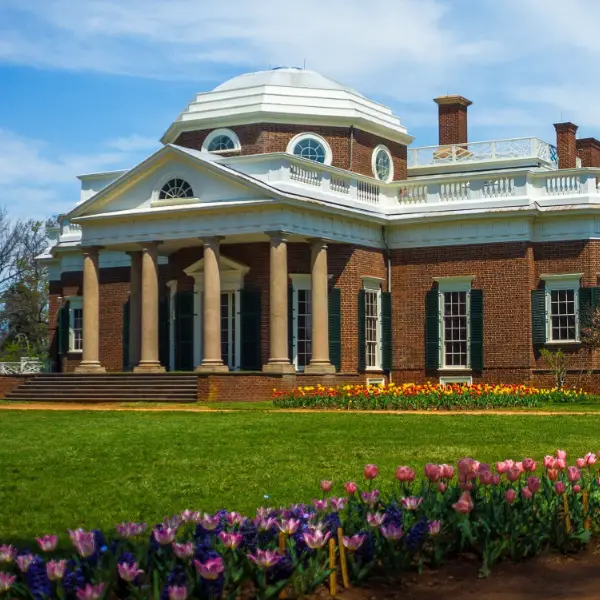
What are the main characteristics of Georgian architecture?
At this point, we are going to try and give you some things to look out for when trying to discern if a building is of Georgian origin.
- Symmetrical Facades: Symmetry is a key characteristic of Georgian architecture. Look to see if the entrance of the building is in the centre, with it surrounded by evenly spaced windows on either side. This symmetry creates a balanced and elegant appearance.
- Classical Elements: Georgian architecture incorporates many classical elements such as columns, pediments, and cornices, which add to the elegance and sophistication of the style. The columns are usually fluted, with a capital of either the Doric, Ionic, or Corinthian order.
- Columned Porches: Columned porches are a common feature in Georgian architecture and provide a grand entrance to the building. These porches are often supported by columns and are sometimes topped with a triangular pediment.
- Ornate Doorways: The entrance to a Georgian building is often marked by an ornate doorway, with intricate moulding, carving, and sometimes a fanlight or transom window above the door. These doorways are often painted in bright colours, adding to the elegance and beauty of the building.
- Fanlight Windows: Fanlight windows are a distinctive feature and are often seen above doorways. These circular or semi-circular windows provide natural light to the entrance hall and add to the elegance and sophistication of the building.
- Dormer Windows: Dormer windows are another common feature of Georgian architecture and provide natural light to the upper floors of the building. These windows are often decorated with pediments and moulding and add to the balanced and harmonious appearance of the building.
- Balustrades and Railings: Balustrades and railings are another common features in Georgian architecture and add to the elegance and sophistication of the building. These decorative elements are often made of iron or wood and are used to add visual interest to balconies, stairways, and rooflines.
Features of Georgian Architecture – Famous Architects
James Gibbs was one of the most famous architects of the Georgian era. After being trained in Rome and he was influenced by the classical architecture of ancient Greece and Rome.
He is best known for his designs of churches, including St. Martin-in-the-Fields in London, and for his contributions to the design of London’s West End.
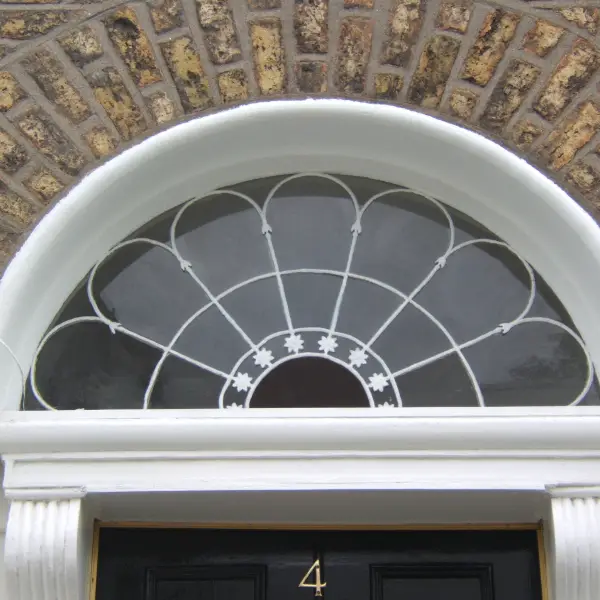
John Vanbrugh was a prominent architect of the Georgian era and is best known for his contributions to the design of grand country houses. Vanbrugh was trained as a playwright and was known for his flamboyant personality and his flair for the dramatic. He is best known for his designs of Blenheim Palace and Castle Howard.
Nicholas Hawksmoor was a prominent architect of the Georgian era and is best known for his contributions to the design of churches and public buildings. Hawksmoor was trained as a mason and was influenced by the classical architecture of ancient Greece and Rome. He is best known for his designs of St. Anne’s Church, Limehouse, and St. George’s Church, Bloomsbury.
These three famous Georgian architects helped to shape the style and development of Georgian architecture and left a lasting legacy of elegant and sophisticated buildings that continue to be admired today.
Features of Georgian Architecture – Famous Examples
There are numerous examples of Georgian architecture around the UK and the United States. A number of these examples are some of the most recognisable buildings in the world.
- Buckingham Palace, London: This is one of the most iconic examples of Georgian architecture and is the official residence of the British monarch. The palace was originally built in 1703 and has been renovated and expanded several times over the years. The palace is characterised by its grand entrance, ornate doorways, columned porches, and symmetrical facades, all the classic hallmarks of Georgian architecture.
- 10 Downing Street, London: the official residence of the British Prime Minister and another great example of Georgian architecture. The building was originally built in the early 1700s and has been the residence of British Prime Ministers for over 200 years. The building is characterised by its symmetrical facade, columned porch, and ornate doorway.
- Monticello, Virginia: The historic home of Thomas Jefferson and is considered one of the finest examples of Georgian architecture in the United States. The building was designed and built by Jefferson and is characterised by its symmetrical facade, columned porch, and fanlight windows.
- Mount Vernon, Virginia: The historic home of George Washington is considered one of the finest examples of Georgian architecture in the United States. The building was originally built in 1734 and has been restored to its original appearance.
- The White House, Washington D.C: The official residence of the President of the United States was originally built in the late 1700s and has been the residence of American Presidents for over 200 years. Can you spot the classic features of Georgian architecture on the building?
These famous examples of Georgian architecture demonstrate the elegance and sophistication of the style and its enduring popularity over the centuries.
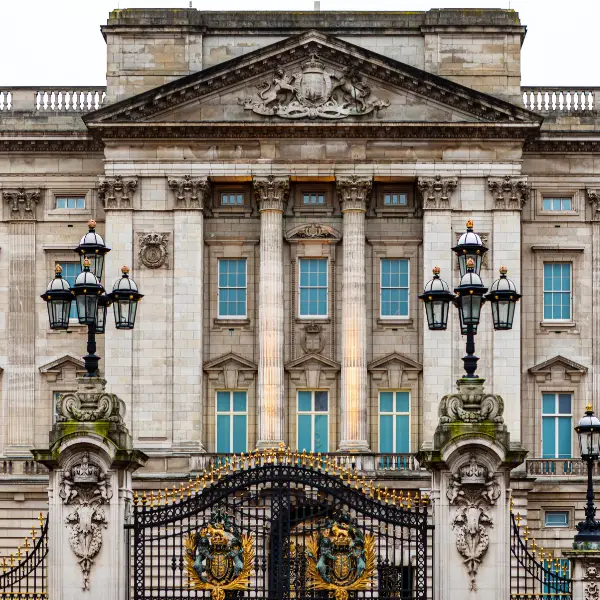
You should now be an expert in features of Georgian architecture and be able to spot all of the key signs when next out and about in a town or city. Features of Georgian architecture continue to be popular and influential to this day which is a testament to the timeless beauty and sophistication of the period.
Georgian houses like any old house often require some additional TLC in order to keep them thriving, thankfully we have a full range of articles to help keep your house in top condition.
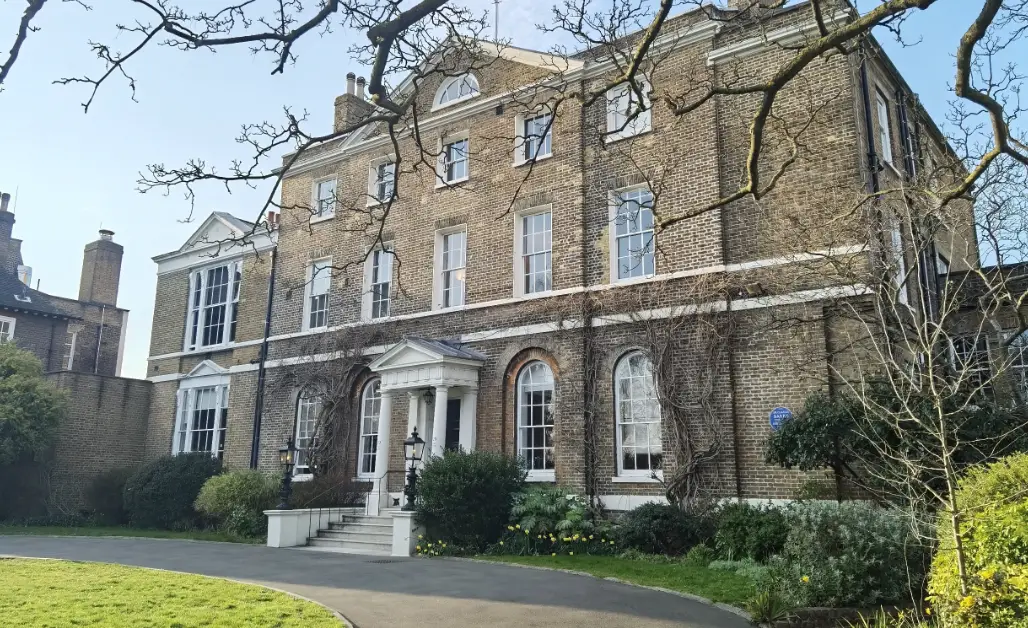

Leave a Reply